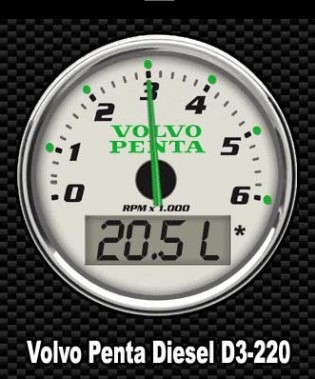In addition to ensuring that the motorcycles are in excellent condition, there are some additional measures if a longer trip is planned. A smooth underwater hull saves fuel and time, control navigation lights, emergency signals and first aid kit, things that need some extra attention. Determining your action radius based on your horsepower/s and fuel tank. The website https://www.boat-fuel-economy.com/ lists engines and their fuel consumption at different speeds.

As an example, the Caravaggio, see the video on the Home page, Volvo Penta engines 230 hp at 3000 rpm, a consumption of 20 liters, 2 engines then 40 liters. At 3000 rpm the boat runs about 20 knots. The tank capacity is 520 liters where we take a margin of 10% as safety, so 475 liters and we can sail for 11,8 hours and then cover 237,5 miles. Another rule of thumb for using diesel engines is to multiply the number of horsepower/s by 0,2, which then applies to running at full power.
For the Caravaggio that is 460 x 0,2, which is 92 liters and you can only sail for 5 hours, but at full speed, 32 knots is 160 miles. It is important that you carefully consider how you will complete any major crossing between two refueling options. You can also record your speed in advance at different rpms and do short samples of consumption, for example, fill up the tank, sail for an hour at 3000 rpm and fill up again to test the theory.
In addition to studying the weather reports, you also need to check whether there are currents on the route you want to travel and you will need nautical charts and books. In the Mediterranean Sea you will encounter few currents, only at estuaries and the Strait of Gibraltar. The North Sea and especially the Strait of Dover have large tidal currents, which you must certainly take into account when planning and adjust the time of sailing on those currents, because sailing against a current of 3 to 4 miles per hour costs a lot of fuel and time.